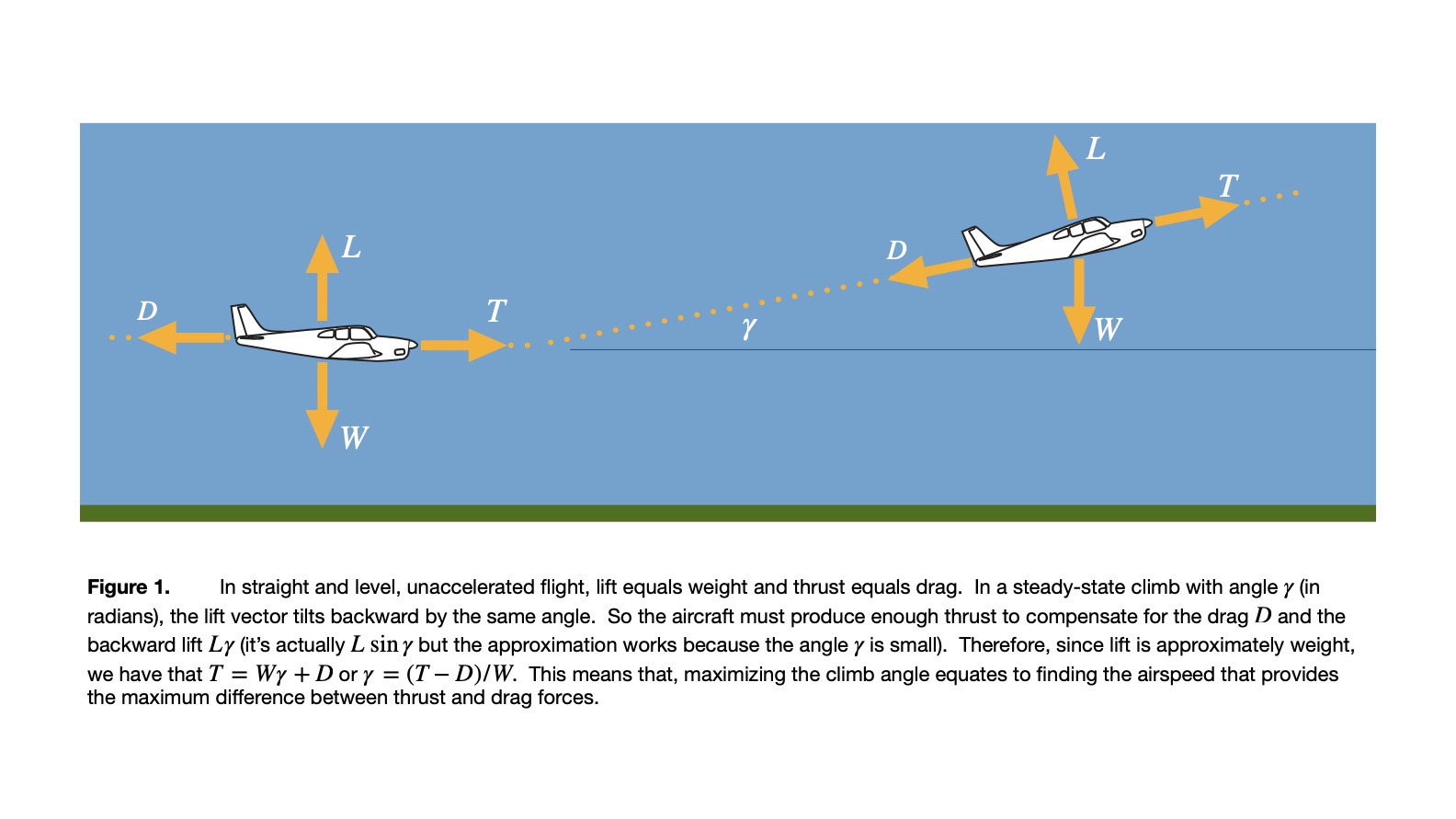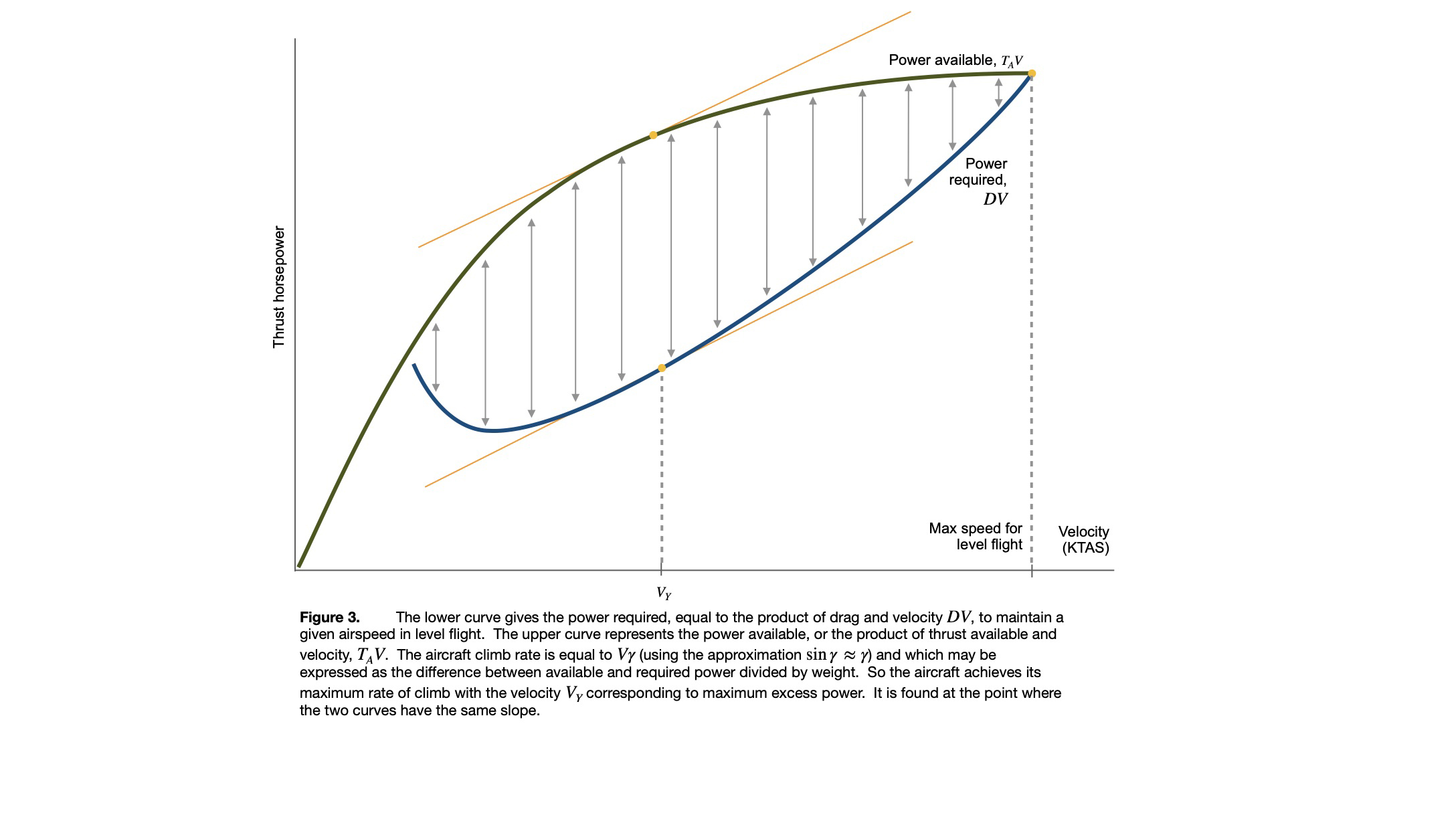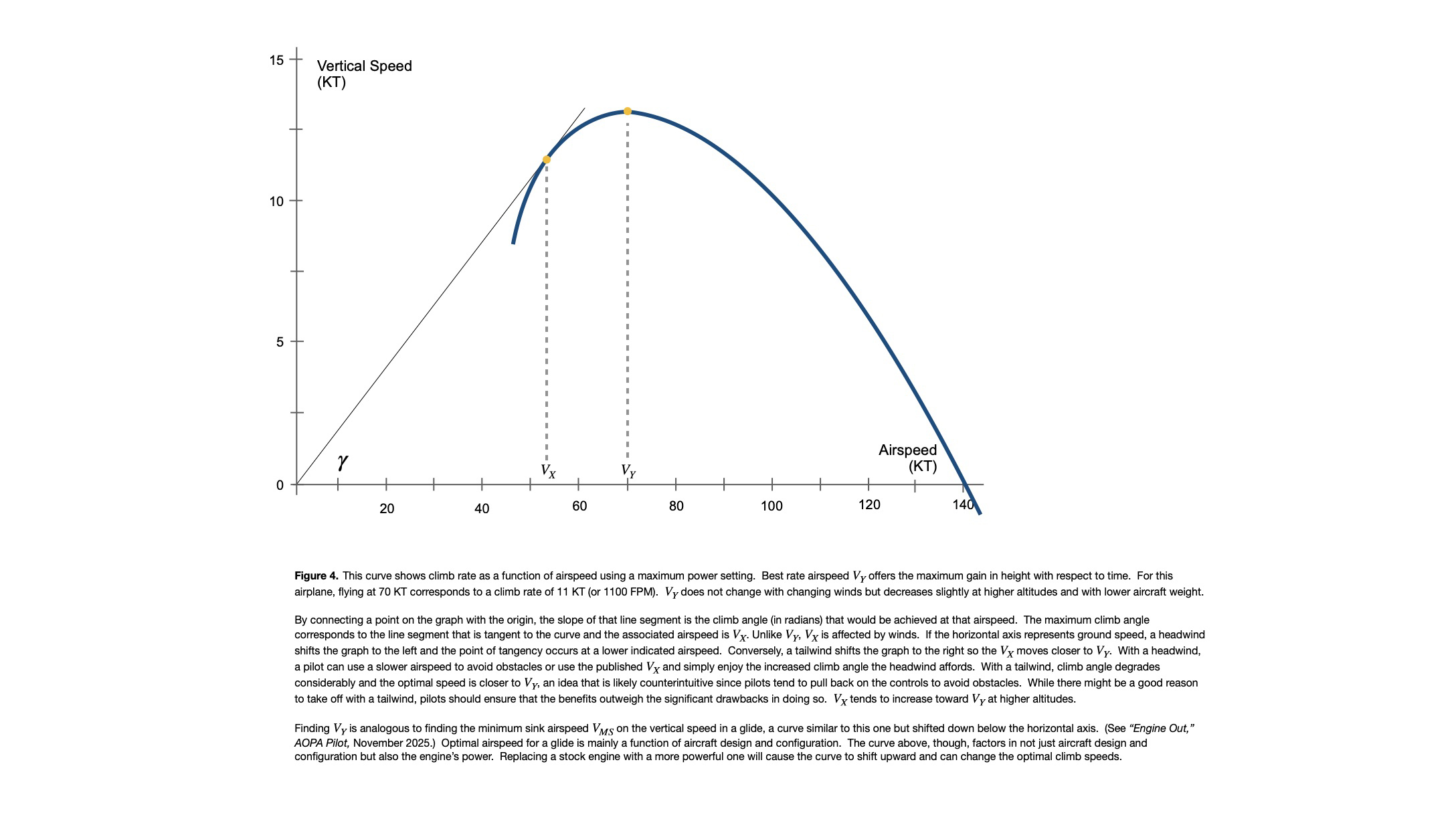Making the grade
Optimizing performance in a climb

After that, achieving the highest climb rate affords more options should an engine anomaly occur; altitude is life, after all. Best angle and best rate airspeeds, though, can make engines run hot. So, when the aircraft has sufficient altitude to handle emergencies, the pilot can lower the nose to a cruise climb airspeed that provides better engine cooling and forward visibility while maintaining a reasonable climb rate.
In “Engine Out: Optimizing Performance in a Glide” (November 2025 AOPA Pilot), I explored optimal gliding airspeeds and shared their interesting properties. We’ll do the same here for optimal climbing airspeeds.
The sidebar figures explain how the best angle of climb airspeed VX and the best rate of climb airspeed VY are defined and determined in flight tests. Best angle of climb VX occurs at the airspeed that maximizes excess thrust. (See Figures 1 and 2, below.) Best rate of climb VY is found at the airspeed that maximizes excess power. (See Figure 3, below.) During certification, test pilots fly the aircraft at maximum power and record the vertical speed across a wide range of airspeeds to produce the curve in Figure 4, from which both VX and VY can be determined.
These curves betray interesting properties about optimal climbing airspeeds. VY divides the front and back side of the power curve. While some define airspeeds below the maximum endurance airspeed as the back side of the power curve, using VY as the boundary instead has added benefits. At airspeeds faster than VY, pulling back on the yoke causes the airplane to ascend and pushing forward makes the aircraft descend. Most flight is spent in cruise flight, so correcting altitude deviations with the yoke is intuitive. But flying below VY means these controls act backward in that pulling back on the yoke makes the aircraft descend and pushing forward results in a climb (see “Are We There Yet?” March 2022 AOPA Pilot). The effects of power, however, are constant throughout the airspeed spectrum.



Optimizing engine care and forward visibility
The shape of the curve in Figure 4 (below) shows that climb rate isn’t terribly sensitive to small deviations from VY. In my own Beechcraft Bonanza, I convert from the 96-knot best rate airspeed to a cruise climb at 120 knots. In most situations, the climb rate is still acceptable. It’s worth noting, however, that POH climb performance typically assumes adhering to VY so if making a climb gradient is critical in a departure procedure, ensure that your airplane can still offer acceptable performance at a higher climb speed.



